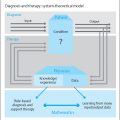16 Thymic Peptides In 1965, Angelo Mario DiGeorge observed a congenital immune defect with pronounced T lymphocytopenia. This defect was associated with thymic hypoplasia caused by malformation of the third and fourth pharyngeal pouches due to disturbed embryonic development during the twelfth week of pregnancy (DiGeorge syndrome). It soon became clear that the thymus gland represents the key organ in the establishment and functionality of cellular immunity. Its far-reaching tasks include: – regulation of hematopoiesis in the bone marrow – differentiation of T lymphocytes (helper T cells developing through specific contacts with major histocompatibility complex [MHC] class II+ cells, and cytotoxic T cells developing through specific contacts with MHC class I+ cells) as well as their maturation and release – development of immune tolerance for the body’s own tissues – secretion of thymic hormones, cytokines, and growth factors (8, 12). Cytokines and growth factors (colony stimulating factors) control the functions of immune cells and have been recommended for diverse clinical indications. Meanwhile, the initial euphoria over their discovery has been put into perspective by the realization that a multitude of cofactors complicates a therapeutically meaningful application. Thymic peptides, thymic hormones, and thymic cytokines finally received increasing attention in the context of experimental and clinical evaluation of cytokines and growth factors. Promising biological activities and pharmacological effects of thymus peptides were described, thus leading to an increase in preclinical research. For purposes of this discussion we distinguish between: – total thymic extracts – thymic peptides – standardized thymic peptide mixtures (1, 2, 6, 8, 9, 12). Data on the preclinical efficacy of total thymic extracts are not available in scientific databases (e. g., MEDLINE). The multitude of published data—in nonpeer-reviewed journals, mostly published or sponsored by product manufacturers—does not prove the scientific relevance of total thymic extracts. Thymic peptides have properties that can restore and stimulate the immune system. It has been shown that the activity of natural killer (NK) cells against tumor cells, which is suppressed in cancer patients, can be significantly increased in vitro. In addition to this restoring or activating activity, there is evidence that thymic peptides influence the cytokine balance. It has been demonstrated experimentally that preparations of thymic peptides induce the release of interleukin-8 and monocyte chemotactic protein-1 (MCP-1), both of which act as cytokines that enhance the anticancer activity of monocytes. Some effects of standardized thymus peptide mixtures have been well documented in oncology. They include: – restoration and stimulation of immune cells in case of immunosuppression due to therapy or cancer – increase in cell numbers and activity of T lymphocytes, NK cells, and LAK cells (lymphokine-activated killer cells) – compensation of undesired drug effects and, especially, of tumor-destructive radiation therapy or chemotherapy – activation of the neuroendocrine network Table 16.1 Total thymic extracts and relevant thymic peptides (examples) *Pharmaceutical and biological qualities, including BSE security, certified by the BfArM (Germany). The following stocktaking focuses essentially on approved, clinically available, and standardized thymus peptide mixtures. These preparations meet the regulations of the German Federal Institute for Drugs and Medical Devices (BfArM) and, after adequate clinical evaluation, seem to be suitable as indication-specific measures in complementary oncology (Table 16.1).
 General Remarks
General Remarks
Total Thymic Extracts (Complex Mixtures)
Thymic Peptides
Standardized Thymic Peptide Mixtures
Molecular weight (Da**)
Constituents
I Complex mixtures
Total thymic extract (THX)
Proteins, peptides, amino acids
II Low molecular weight mixtures
Thym Uvocal*
Thymoject
< 5 000
< 10 000
Protein-free, chromatographically
standardized peptide mixtures
III Thymic fractions
Thymic humoral factor
Thymosin fraction V
< 3 400
< 12 000
Biochemically characterized, synthetic
Biochemically characterized
IV Thymic peptides
Thymopentin
Thymosin α−1
Thymopoietin II
680
3 100
5 600
Pentapeptide
Polypeptide
Polypeptide
In vitro
In vivo (murine models)
↑Immunocyte activity (a, b, c)
↑Immunocyte number/activity in peripheral blood (a, b, c)
↑Cytokine release (a, b, c)
↑Thymocyte proliferation (a, b, c)
↑Proliferation, maturation, and differentiation of thymocytes (a, b, c) and bone marrow progenitor cells (b)
↑Anticancer/antimetastatic activity (a, b, c)
↑Antiviral activity (b)
↑Immunocyte restoration (b, c)
 Experimental Studies
Experimental Studies
Stay updated, free articles. Join our Telegram channel

Full access? Get Clinical Tree



